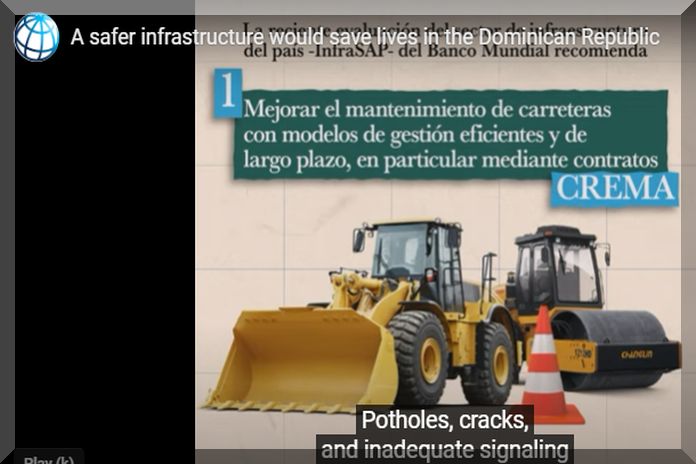By Mikel Tejada Ibañez, Rohan Shah and Leslie Nii Odartey Mills
The roads of the Dominican Republic are its development arteries. They carry people, goods, ideas, and dreams through a land network that extends mainly from southeast to northwest, linking Santo Domingo with ports and airports, and connecting the country’s economic and tourist hubs.
However, their current state poses a serious risk to all who travel on them. The mortality rate in traffic accidents stands at 35 deaths per 100,000 inhabitants, more than double the regional average and one of the highest globally. Motorcyclists and pedestrians are the main victims.
What makes a road network, which is accessible, dense, and mostly paved, also one of the most unsafe in the world? What makes a road network, which is accessible, dense, and mostly paved, also one of the most unsafe in the world?
One of the main causes behind these alarming statistics is inadequate maintenance. Potholes, cracks, poor signaling, and insufficient lighting are just some of the obstacles stemming from a maintenance approach focused on solving problems rather than preventing them.
In fact, according to the International Road Assessment Program (iRAP), a staggering 78 percent of the infrastructure on the three main corridors is considered unsafe. This is compounded by the aging condition of vehicles, with 43 percent being over 20 years old, and roads vulnerable to damage and interruptions caused by climate events, whose frequency and intensity have risen in the last decades.
Following a recent assessment of the infrastructure sector – the InfraSAP report – we analyzed how to improve the road infrastructure of the Dominican Republic and transform its road network into a reliable and safe system.
Spend better and invest more
Despite its solid growth, public investment in infrastructure in the Dominican Republic has decreased from 1.5 percent to 0.7 percent of GDP in the last 10 years. Given the country’s services and tourism-based economy, coupled with its vulnerability to climate change, it is estimated that a minimum of 3.12 percent investment is required to transition towards sustainable development. The key, therefore, lies in spending better and investing more.
Spending better entails improving the maintenance and resilience of the road network through the adoption of performance-based management models with a medium- and long-term focus. This involves efficient management, taking into account not only financial factors but also technical, institutional, and legal factors that affect the execution and maintenance of works, and the service delivery.
Unlike traditional input-based contracting, the report recommends opting for Performance-based Road Rehabilitation and Maintenance Contracts (CREMA contracts). These contracts involve integrating design, rehabilitation, and maintenance over five to ten years (while the pavement completes its normal wear cycle) with payments linked to performance.
International experience indicates that CREMA contracts promote better road conditions, reduce final costs, and facilitate management (fewer contracts and parameters to monitor). Brazil, for instance, has widely adopted CREMA contracts for road rehabilitation and maintenance in states like Minas Gerais, Sao Paulo, Bahia, and Rio Grande do Sul.
Related articles
- On the Right Path: Strengthening the National Statistical System in the Dominican Republic
- Dominican Republic: Five challenges to overcome for achieving inclusive economic growth
Investing more: The framework of Public-Private Partnerships (PPPs) could be used to encourage greater private sector involvement by betting on CREMA contracts. These public initiatives with reduced capital investment would focus on enhancing road management efficiency while bolstering the PPP framework itself.
In addition to this strong commitment to improving road infrastructure, two other recommendations are added:
- Strengthening road safety. Through adequate data collection, improvements in institutional coordination and control mechanisms, particularly for motorcycles, and the implementation of mandatory vehicle technical inspections.
- Promoting the use of public transport and non-motorized transport. Enhancing public transport to alleviate congestion and adapting infrastructure to encourage non-motorized transport can mitigate the environmental impact of urban mobility.
A safe road system will not only save lives, but also boost the Dominican Republic’s economy, connectivity, and competitiveness of a country that already represents the seventh largest economy in Latin America and aims to become a global reference by 2030.
![]()





